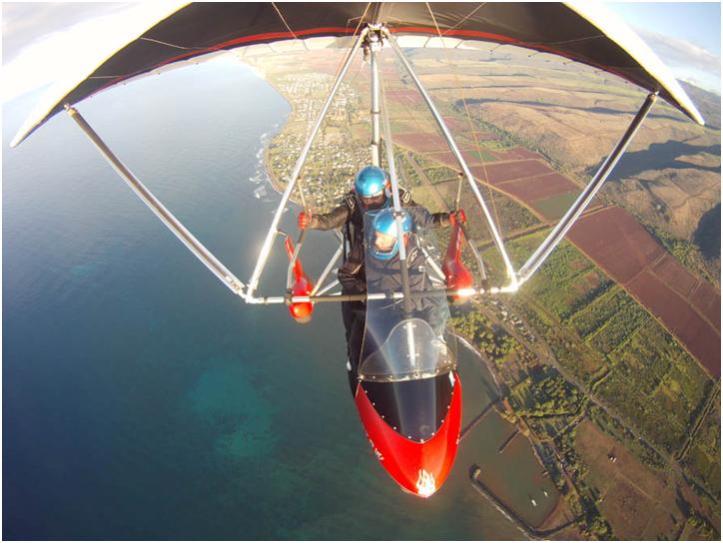
Port Allen Airport (PAK), Kauai, Hawai’i
I didn’t get much sleep the night before, thinking about the next day’s scheduled activity. A few days ago, at the suggestion of a friend, I reserved an early morning sight-seeing and instruction flight in a powered glider. Also known as a flex-wing glider, and legally known as a weight-shift control aircraft, this class of aircraft has very few aerodynamic controls. Moving the control bar left and right, up and down, allows the pilot to navigate in three dimensions by flexing the wing, similar to the wing warping in Orville and Wilbur Wright’s first powered aircraft. I didn’t know it then, but I would soon learn that it would take me a bit to get used to as control operation is exactly opposite the yoke or joystick control in a powered plane.

The other half of our flight of two taxiing for takeoff at sunrise
We arrived at the airport before sunrise. Moments after we arrived, two powered gliders from ‘Birds in Paradise Fly Kauai’ taxied into view. After signing the obligatory liability release, I was fitted for helmet, gloves, headset and flight suit. The flight suit would provide warm covering as we proceeded over and around Waimea Canyon. Known as the Grand Canyon of the Pacific, the canyon’s rugged and rocky walls reach an elevation of around 4000 feet. We would need to be safely above that for our flight training maneuvers. The air above the canyon is noticeably cooler than the surface and I would soon be glad to have the extra clothing.
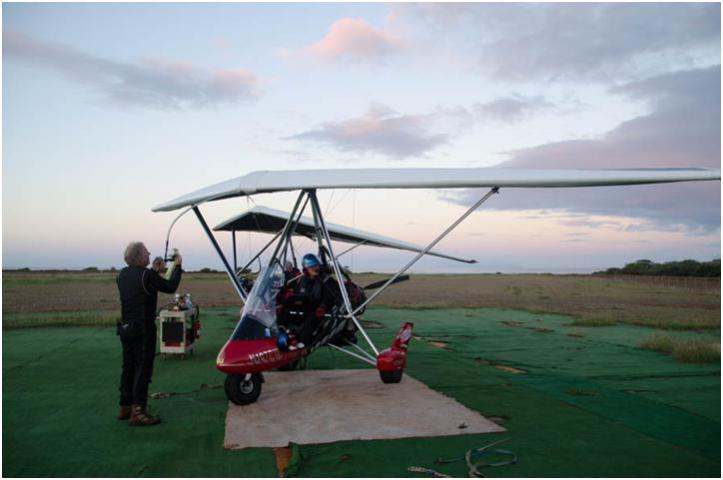
Gerry, my instructor, prepares the nose camera before our flight while I hold the wing control down so Gerry can reach the end of the boom
Preparation for flight included the usual seat belt and life vest safety briefing, and Gerry Charlebois, my instructor pilot, installed the rear facing camera that would record an image every 30 seconds of our flight. The one-hour flight is legal flight instruction and at the conclusion of the flight, documentation is provided to insert in a pilot’s logbook validating the training toward any future rating. While I was getting ready, another flight student arrived. He was scheduled to depart in the second aircraft.
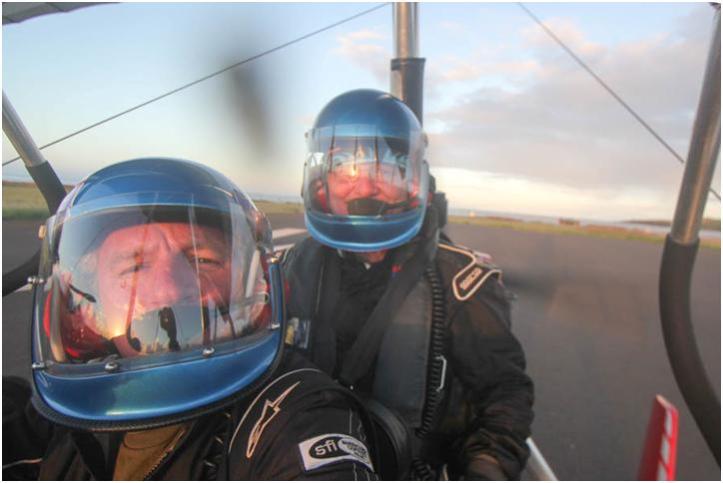
Gerry takes a “selfie” with the DSLR just prior to take off
We left Port Allen Airport as a flight of two, but shortly after departure, our two aircraft went their separate ways.

Shortly after departure, we are flying along the coastline. Port Allen Airport is behind us at the tip and the large white building on the pier is at the commercial sea port
With the airport, we departed on my flight lesson and sightseeing tour. We headed northerly up Hanapepe Canyon, then west toward Waimea Canyon. Every thirty seconds, the camera mounted on a boom at the apex of the wing snapped another photo.
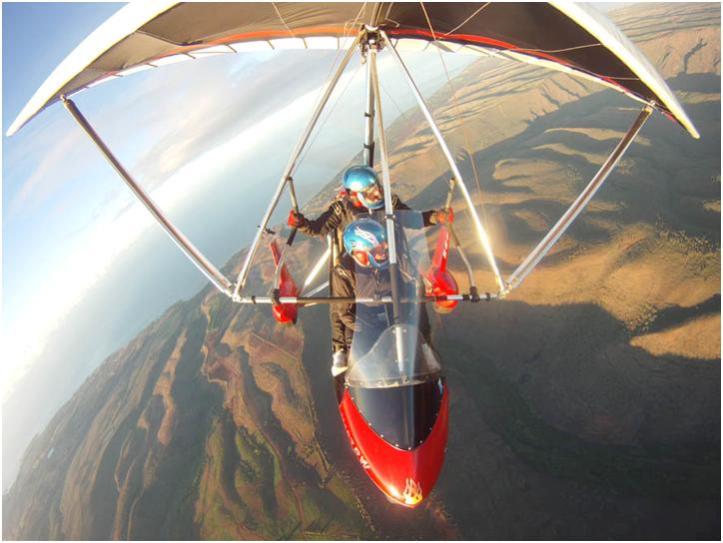
A 360 degree turn over the canyon
Over the heart of Waimea Canyon, Gerry demonstrated a 360 degree turn and asked me to try one. I made it around, but needed some help getting back on our original heading. I went past 360 a little bit as we came around because I hadn’t exerted enough pressure in the opposite direction to stop our rotation. Even though there was flight training going on, I couldn’t help but admire the scenery below.
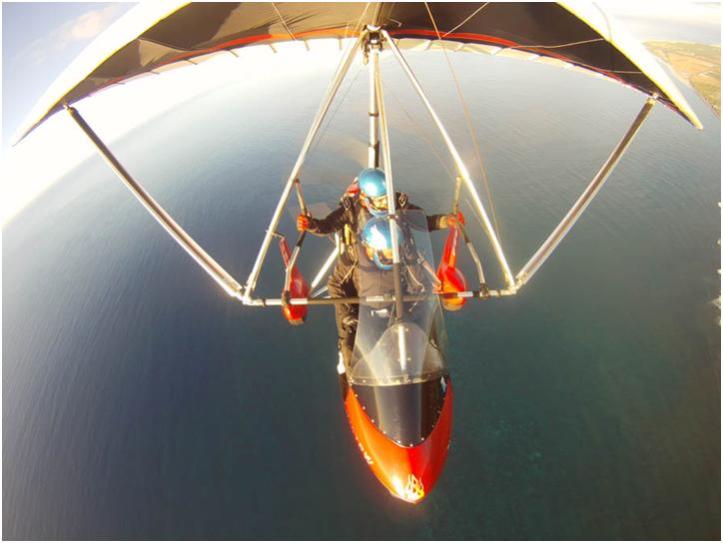
Over the ocean but always within gliding distance from the shore
We explored the canyon and Gerry gave me a bird’s eye view of the observation area where we stood to view the canyon six years ago on our last trip to Kauai. From there, we headed west, and Gerry contacted the controller at the Navy’s Pacific Missile Range Facility asking permission to transit their airspace along the west and south shores of the island.
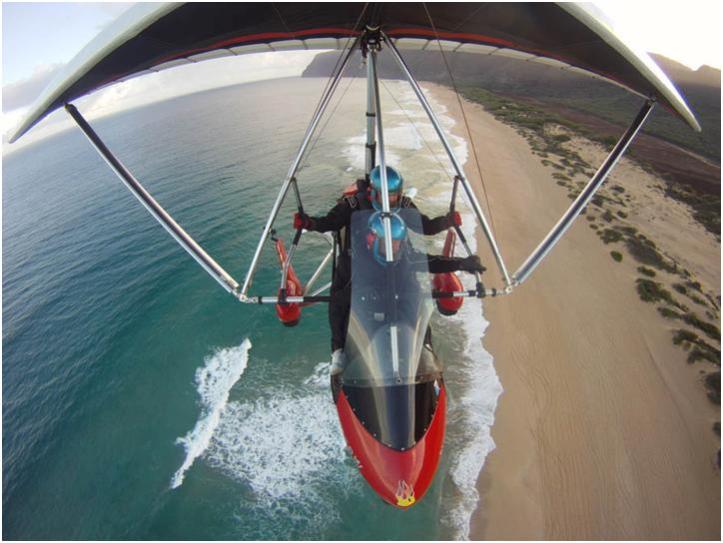
Flying along the beach, I believe we are at Kekaha
Permission was granted and we were soon rocketing along the beach at around 95 knots (about 110 mph or 175 kph). Gerry also kept his eyes toward the sea, hoping to spot a whale. There have been recent sightings, but it’s early yet, and Gerry hasn’t yet seen one this season. He did, however, spot a pod of dolphins frolicking near the shore. Moments later, we were circling the pod with Gerry snapping away with his DSLR camera.
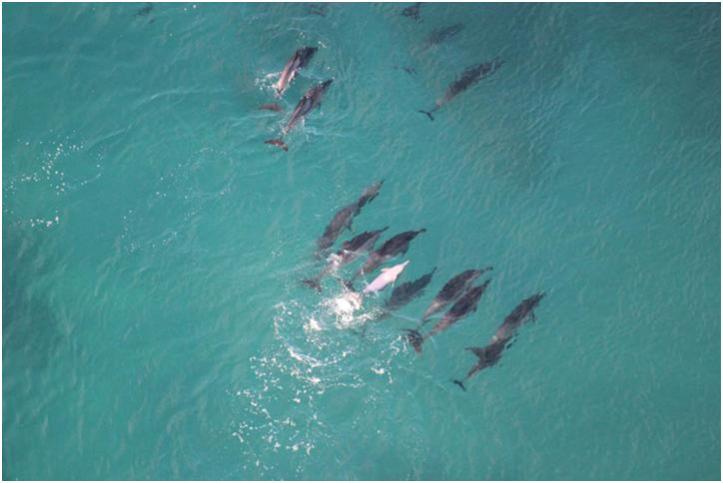
One of several shots of the pod of dolphins
All too soon, it was time to return to the airport and end this magical flight. I had been given the option of a 90-minute lesson, and with the rivers flowing deep in the canyons, the smooth, sandy beaches, and the deep blue Pacific Ocean all making tempting excuses to extend the flight for another thirty minutes; I resisted the temptation knowing people were waiting for us on the ground, and we had other plans for the day.
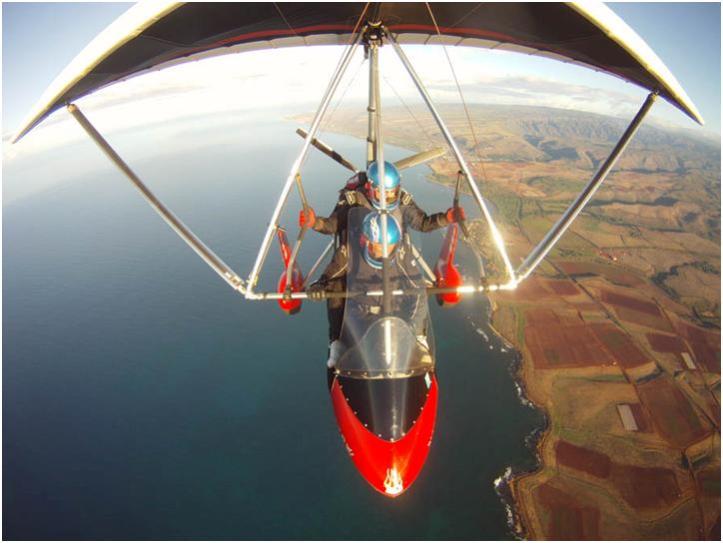
Notice in this image, the propeller is stopped; at this point we are less than five minutes from landing
Gerry had one more treat in mind for me as we prepared for landing. About four minutes from touchdown, the engine went silent. Gerry had shut it down and with his capable hands at the control bar; he guided us into an abbreviated traffic pattern, landed on the runway and taxied to the ramp without engine power.
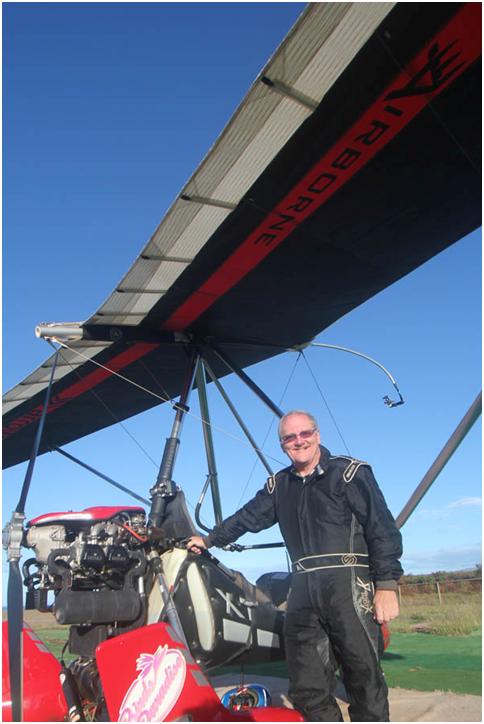
Almost all of the photos for this post were taken either by Gerry or by the nose cam. Thank you, Gerry, for allowing me to publish them. Tourists are not allowed to bring cameras on the flight; it is flight training after all. You won’t have time to take photos. Besides, you wouldn’t want to risk dropping your camera gear. You will be able to purchase a set of photos from Birds in Paradise Fly Kauai when you arrive back at the ramp.
For this private pilot, rated for both land and seaplanes, this powered gliding experience is a highlight of my aviation experiences. This bird’s eye view of Kauai is definitely an E-ticket ride and well worth the expense.
For more information on Birds in Paradise, click here to visit their website.
John Steiner

[…] read more about my flight lesson with Gerry, click here. I shall cherish that one-hour flight training entry in my logbook, that on the day that I met and […]
so very glad u got to go fly wit Gerry!!!!!!!!